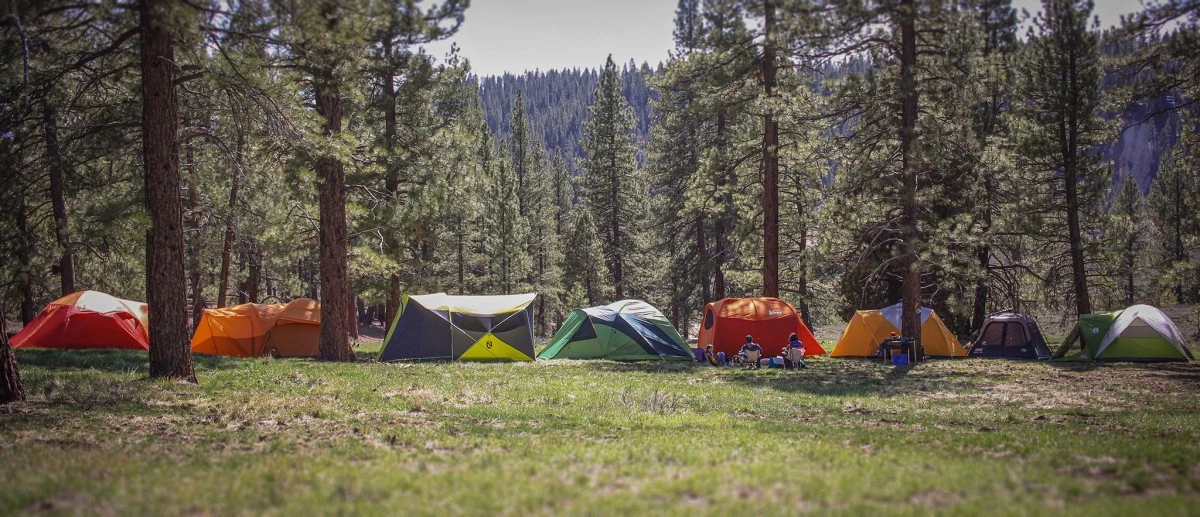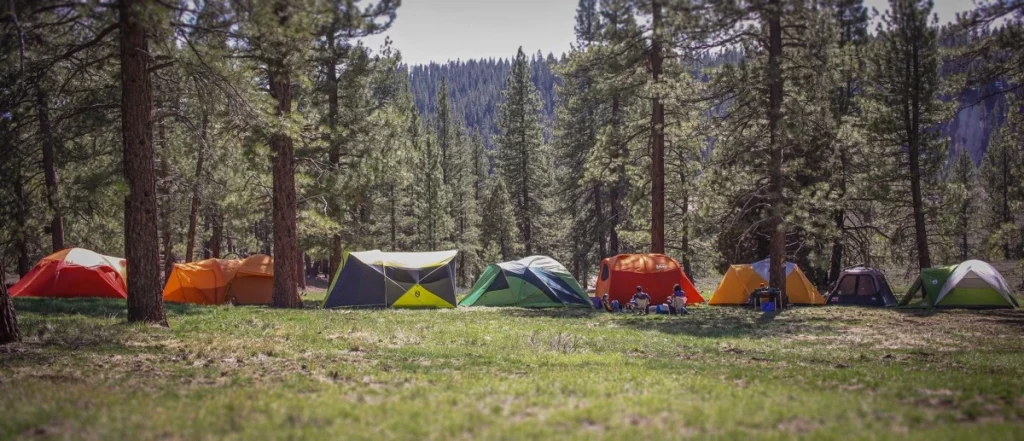How to Choose a Camping Tent
by TravelCamp

Buying a tent is a big deal. There are hundreds of camping tent options, they get expensive fast, and you don’t want to be stuck with the wrong gear on a camping trip. The good news, we are here to help make this process as easy as possible. We will walk you through the major features of our favorite camping tents, what their purpose is, and help you understand if they should matter or not.

Our goal here isn’t to pick your tent for you (sorry, you still have to make that choice on your own) but to give you all the information you need to make your choice easier. In less than 15 minutes, you will be spouting off words like vestibule and guyline, you will understand the difference between a hub pole and a straight pole setup, a single wall and a double wall, and you will know that six people don’t fit in a 6-person tent.
Considerations
Now we are big fans of narrowing things down, so let’s start with the first and most important decision you will make in your camping tent selection — what kind of camping do you want to do?
There are four basic styles that tents are categorized in: backpacking (think lighter and smaller), camping (think bigger and heavier), 4-season (think warmer and stronger), and specialty (think rooftops, portaledges, budget tents, ultralights, etc.). The vast majority of tents purchased are for camping. If you intend to take your tent from the back of your vehicle to a campsite that is less than a football field away, you’ll want a camping tent, and you are in the right spot. We have a few tents in our camping tent lineup that might also be capable (though not practical) of using as a backpacking tent or a shoulder season tent — even for dipping your toes into some mild winter camping. So, if you are on the fence or thinking that you might want to try something outside of just summer camping, you still may be in the right place.
From here, we like to consider five key metrics that we think are the most important in determining the overall performance of a camping tent: Space and Comfort, Weather Resistance, Ease of Use, Durability, and Family Friendliness. As you browse the tents we have reviewed, you will notice that each one contains a section on how well they performed in each metric.
Space and Comfort
For most, this is the metric that matters, and rightfully so. When you are camping less than 30 feet from your car, weight and packed size isn’t an issue, so going bigger is the right option. And let’s face it, if the weather is going to be bad, chances are you will simply reschedule. Plus, we all know that some creature comforts will be coming along as well. Your favorite cooler, camping chair, blanket, portable grill, slackline, fishing gear — if it fits in your vehicle, it can be part of your camping experience. Same for a great tent. As you continue reading, think about what comfort means to you. For instance, some people are most comfortable inside, cozy and warm, while others enjoy open tents with outdoor awnings. Regardless of your definition of comfort, your tent should fit your needs and style.
We break down space and comfort to overall use of space, vestibule space, pockets, clips, storage, height/headroom, and how many beds/what size beds will fit inside.
Overall Use of Space
In general, this means size. But all equal-sized tents are not equal, so we like to think about it more holistically. How comfortable the space actually feels, how the angle of the walls can make a big tent feel small or a small tent feel large, how big the interior space is relative to the exterior space, etc. These things should be factored in with actual square footage to truly get a full picture of what your tent will feel like.
It’s important to note that most tents are tight at their stated capacity. So, should you need enough room to spread out your baseball card collection, play board games, do yoga, etc., we suggest you either go with something above the number of folks in your camping group (unless some are children) or check out handy amenities like the size of the tent’s vestibule. It’s also prudent to investigate your potential tent’s headroom and door/window access so you know if it will be tall enough for everyone and whether star-gazing can be on the docket or not.
Height/Headroom
This can be critical in making a camping tent livable for the whole family, allowing taller campers to stand up comfortably, and reducing neck and back strain. If you’ve ever spent time in smaller backpacking tents, the ability to stand up and move upright freely around a larger (car) camping tent is a revelation. The angle/pitch of a tent’s walls will add or detract from the amount of room you have and determine whether you can stand up only in the dead center or whether two can do the tango inside.
We understand that comfort is in the eye of the beholder and that each person’s take on the importance or value of tent features is different. But that is why we try to tell the full story of each tent, the good, the bad, and the indifferent, so you can decide what matters most and choose a spacious and comfortable tent.
Weather Resistance
Anyone who’s spent a few nights outside will tell you that even on the warmest, sunniest day, things can get cold or windy (or both) in the evening. Night skies can turn from starry and bright to dark and wet fast. Being prepared for all types of weather is crucial for a tent as your wardrobe. Extreme hot weather in a poorly ventilated tent can be nearly as bad as sleeping in a wet sleeping bag. We assessed each tent for performance in rain and wind and conditions you might encounter like warm beaches or the hot desert — after all, the joy of camping is the freedom it allows you to explore and adapt to a variety of landscapes.
Buying a tent is a big deal. There are hundreds of camping tent options, they get expensive fast, and you don’t want to be stuck with the wrong gear on a camping trip. The good news, we are here to help make this process as easy as possible. We will walk you through the major…